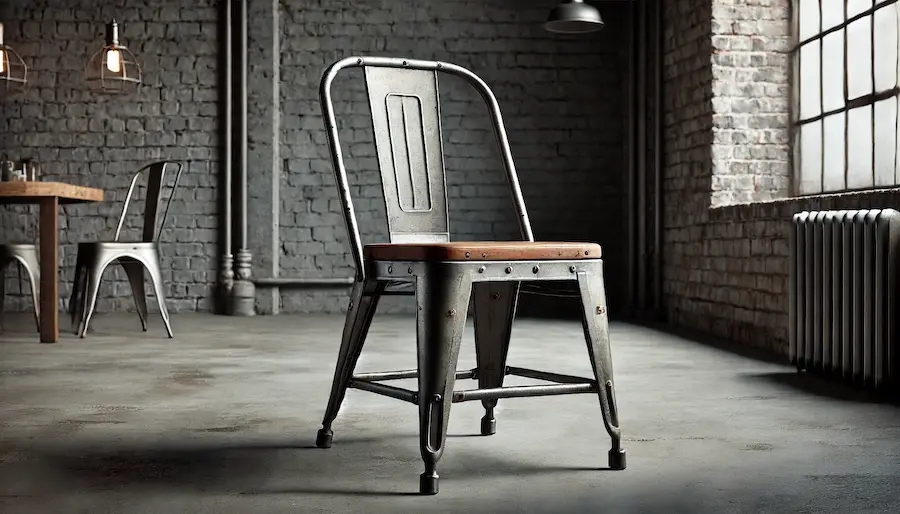Industrial chairs are a testament to the fusion of functionality and aesthetic appeal, originating from the practical needs of the Industrial Revolution and evolving into iconic design elements in modern interiors.
Introduction to Industrial Chairs
Industrial chairs are characterized by their utilitarian design, robust construction, and the use of raw materials such as metal and wood. Initially crafted for factory and workshop settings, these chairs have transitioned into popular choices for contemporary home and office décor, appreciated for their durability and minimalist appeal.
History and Origins of Industrial Chairs
The inception of industrial chairs dates back to the 19th century during the Industrial Revolution, a period marked by a shift from handcrafted goods to mass production. This era necessitated the creation of functional, durable furniture for industrial workers, leading to designs that prioritized practicality over ornamentation. An example is the Nicolle chair, designed in 1913 by Paul Henry Nicolle near Paris, which became popular in factories throughout France.
Key Features of Industrial Chairs
- Durable Materials: Constructed from sturdy materials like steel, iron, and reclaimed wood, ensuring longevity and resilience in demanding environments.
- Functional Design: Emphasis on practicality with features such as adjustable heights, swivel capabilities, and ergonomic support to accommodate various tasks and user needs.
- Aesthetic Appeal: The raw, unfinished look, often showcasing visible welds, rivets, and natural wood grain, adds a rugged charm that complements various interior styles.
Applications of Industrial Chairs
The versatility of industrial chairs allows them to enhance various interior styles:
- Residential Spaces: Serve as functional and stylish additions to living rooms, dining areas, and home offices.
- Commercial Environments: Commonly found in offices, cafes, and public spaces, offering both comfort and durability.
- Outdoor Settings: Designed with weather-resistant materials, industrial chairs can enhance patios and garden areas.
Considerations When Choosing an Industrial Chair
When selecting an industrial chair, consider the following factors:
- Ergonomics: Ensure the chair provides adequate support, especially if it will be used for extended periods. Look for features like adjustable height and lumbar support to promote healthy posture.
- Material Quality: Opt for chairs made with high-quality materials to withstand regular use and maintain their aesthetic appeal over time.
- Design Compatibility: Consider how the chair’s industrial look will integrate with your existing décor to achieve a cohesive interior design.
Conclusion
Industrial chairs blend durability with minimalist design, making them a versatile choice for various settings. Understanding their historical context, key features, and practical applications can assist you in selecting a piece that not only serves a functional purpose but also enhances your space with its distinctive industrial charm.
